Coronavirus Today: Shifting the focus from herd immunity
Good evening. I’m Karen Kaplan, and it’s Friday, Nov. 12. Here’s the latest on what’s happening with the coronavirus in California and beyond.
Last week, as my colleague Melissa Healy covered a meeting of the expert panel that advises the Centers for Disease Control and Prevention about vaccines, she caught a brief exchange that pricked up her ears.
It began when Dr. Oliver Brooks, a panel member and chief medical officer of Watts Healthcare in Los Angeles, invited CDC representatives to discuss how rolling out Pfizer and BioNTech’s new kid-friendly COVID-19 vaccine to children ages 5 to 11 could bring the country closer to its herd-immunity goal.
At first, Brooks was met with an awkward silence. Then, Dr. Jefferson Jones, a medical officer on the CDC’s COVID-19 Epidemiology Task Force, spoke up.
“Thinking that we’ll be able to achieve some kind of threshold where there’ll be no more transmission of infections may not be possible,” Jones told the CDC panel. The widespread phenomenon of waning immunity — among people who survived coronavirus infections as well as those who’ve been vaccinated — has made the adoption of a clear herd-immunity goal “very complicated,” he added.
Since the pandemic’s early days, we’ve been working toward the collective goal of reaching herd immunity. Experts like Dr. Anthony Fauci predicted that once 70% to 85% of the population was vaccinated against COVID-19, the virus would run out of potential hosts to infect and the outbreak would sputter to an end.
Even at the low end of that range, that target has been elusive. As of Friday, only 58.7% of Americans are fully vaccinated, according to the CDC‘s COVID Data Tracker.
That percentage is sure to rise, but its value will fall.
For starters, the target that was set in the 70%-to-85% range was based in part on the transmissibility of the coronavirus. That ability to jump from person to person has escalated dramatically in the last year, thanks to the rise of the Alpha and Delta variants.
Meanwhile, the protection provided by vaccination or past infection is turning out to be less durable than previously expected. That also affects the accuracy of herd-immunity estimates.
The SARS-CoV-2 virus “has a lot of tricks up its sleeve, and it’s repeatedly challenged us,” Dr. John Brooks, chief medical officer for the CDC’s COVID-19 response, told Healy when she called to follow up on Jones’ comments. “It’s impossible to predict what herd immunity will be in a new pathogen until you reach herd immunity.”
That’s why the CDC is shifting its focus away from a specific vaccination target that, when met, would presage the end of the pandemic. Instead, officials intend to redefine success in terms of new infections and deaths. (The particular goals haven’t been selected.)
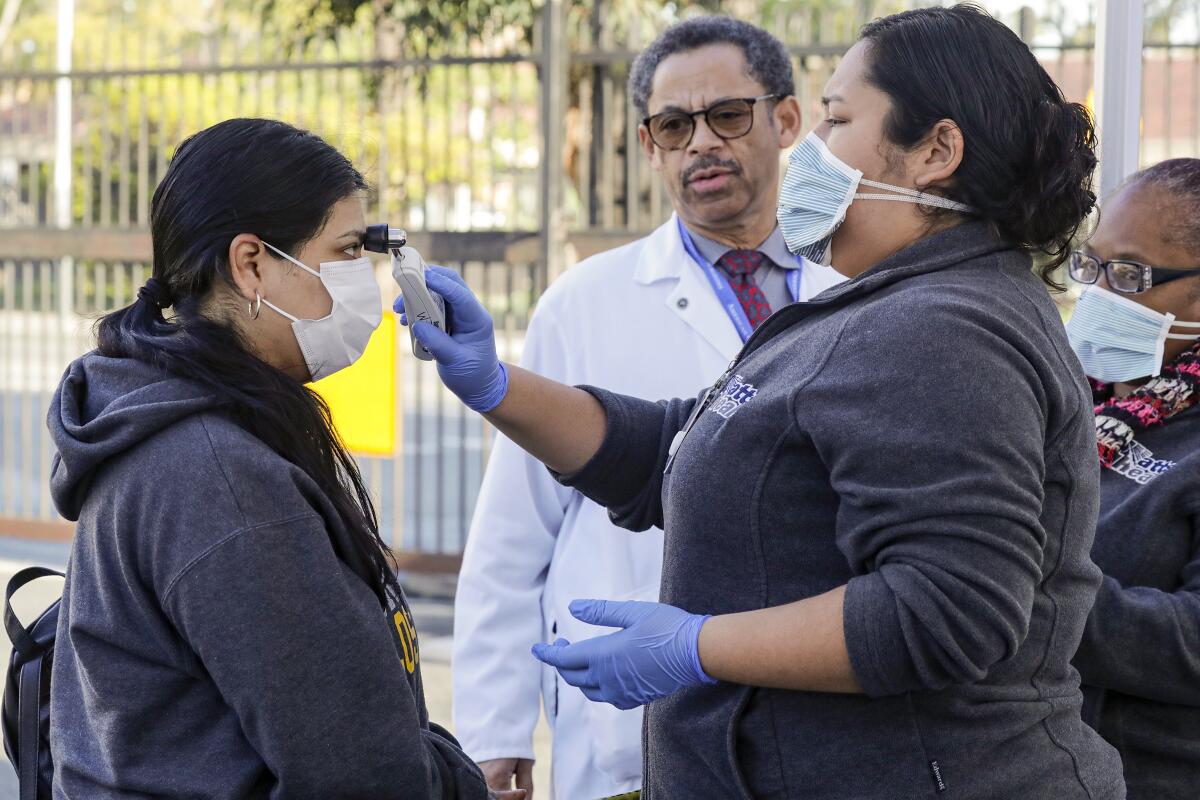
Oliver Brooks, the advisory panel member from Watts, said he could understand where the CDC was coming from. But he’s nonetheless concerned that backing off a specific target for herd immunity will cause the nation’s immunization effort to lose some much-needed steam.
Plus, he said, if health officials stop focusing on the “herd,” Americans may lose sight of the fact that getting vaccinated against COVID-19 isn’t just a way to protect yourself but also a means for protecting the community around you.
There’s some risk involved in changing the goal posts, because it could feed into the idea that the CDC’s pronouncements on COVID-19 aren’t all that credible. The agency has already taken fire for its about-faces on the value of masks and how readily the virus spreads in the air.
Unfortunately, that’s just how science works.
“We want clean, easy answers, and sometimes they exist,” John Brooks said. “But on this is one, we’re still learning.”
By the numbers
California cases and deaths as of 4:40 p.m. Friday:

Track California’s coronavirus spread and vaccination efforts — including the latest numbers and how they break down — with our graphics.
A lasting legacy
What does it take to encourage people to get vaccinated against COVID-19? People like Father Francisco Valdovinos.
Valdovinos was a Catholic priest at the Sanctuary of Our Lady of Guadalupe in Mecca, Calif. During the few years he served the congregation in the Coachella Valley, he organized literacy and legal classes for his working-class parishioners and pressed politicians to improve services for the community.
But the 58-year-old immigrant from Mexico really leaned in when the pandemic arrived. He gave out tens of thousands of face masks, celebrated Mass with social distancing, and used the parish as a coronavirus testing site. He encouraged people to take COVID-19 seriously. And even before the first shots were available, he urged people to get vaccinated.
Valdovinos himself never got that chance. He came down with COVID-19 in December and died in January.
At the time, residents of Mecca promised to honor Valdovinos by getting the vaccine. And as my colleague Gustavo Arellano writes, they sure did.
As of Friday, 54.1% of Riverside County residents are fully vaccinated. But in the 92254 ZIP Code that includes Mecca, that figure is 72%, The Times’ tracker shows.
That’s high enough to put Mecca in the top quartile of California ZIP Codes for which vaccination rates are available, according to data from the state’s Department of Public Health.
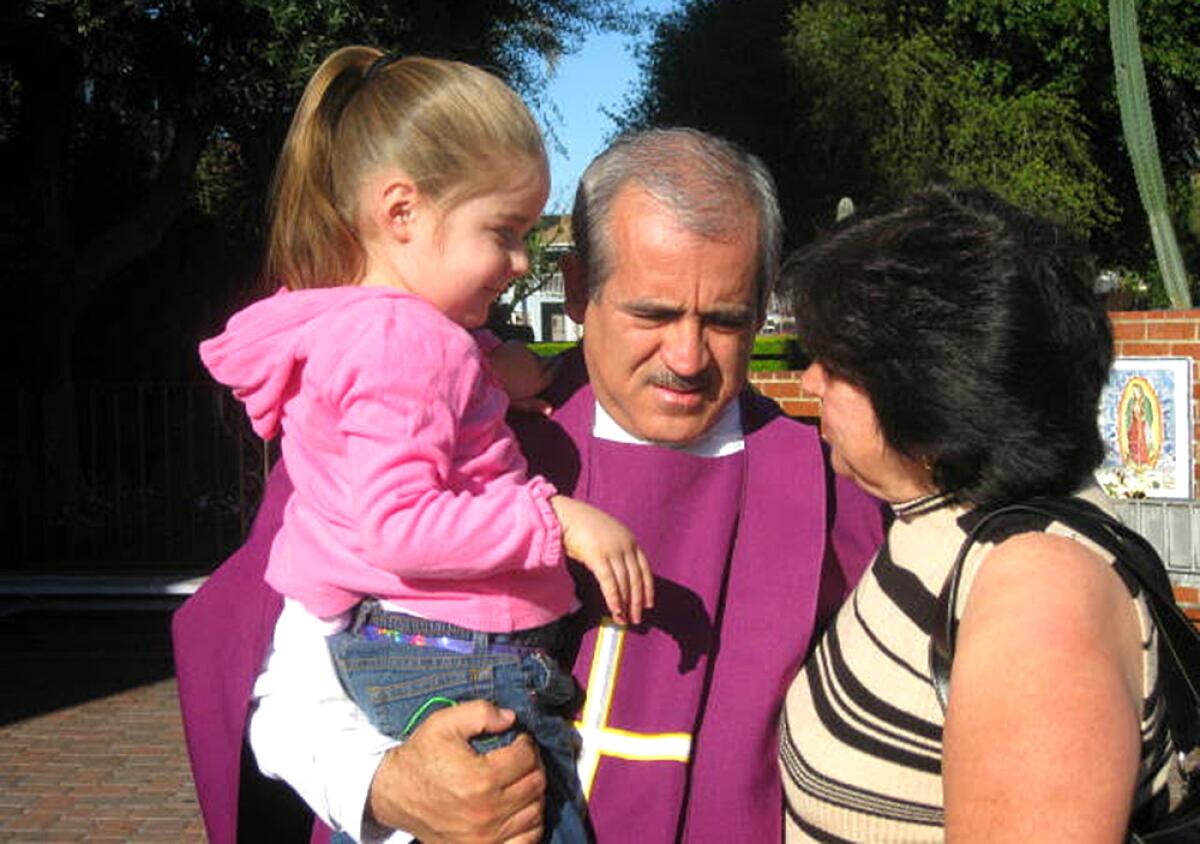
“When Father Valdovinos died, he awakened the consciousness of the people in our community to go out there and get the shot,” Assemblyman Eduardo Garcia (D-Coachella) told Arellano. “For their health, yes, but also out of respect for his life.”
Maria Machuca, a longtime community organizer, added that getting the shots was a way of securing Valdovinos’ legacy.
“He was just building momentum,” Machuca said. “It’s just a big loss — we don’t know what he could’ve done. So we need to continue what he did.”
California’s vaccination progress
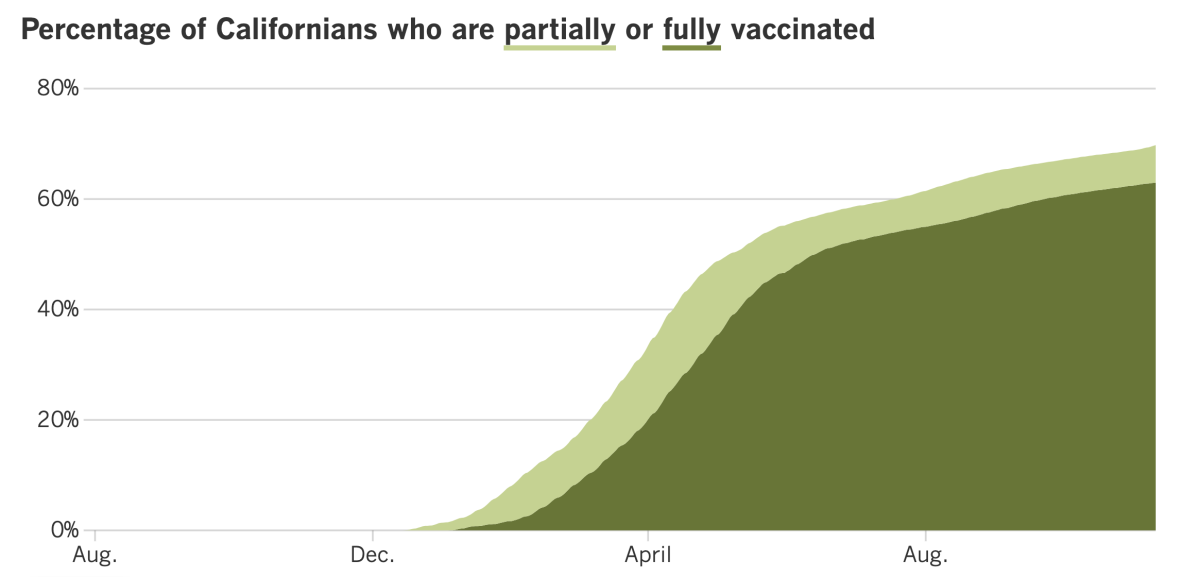
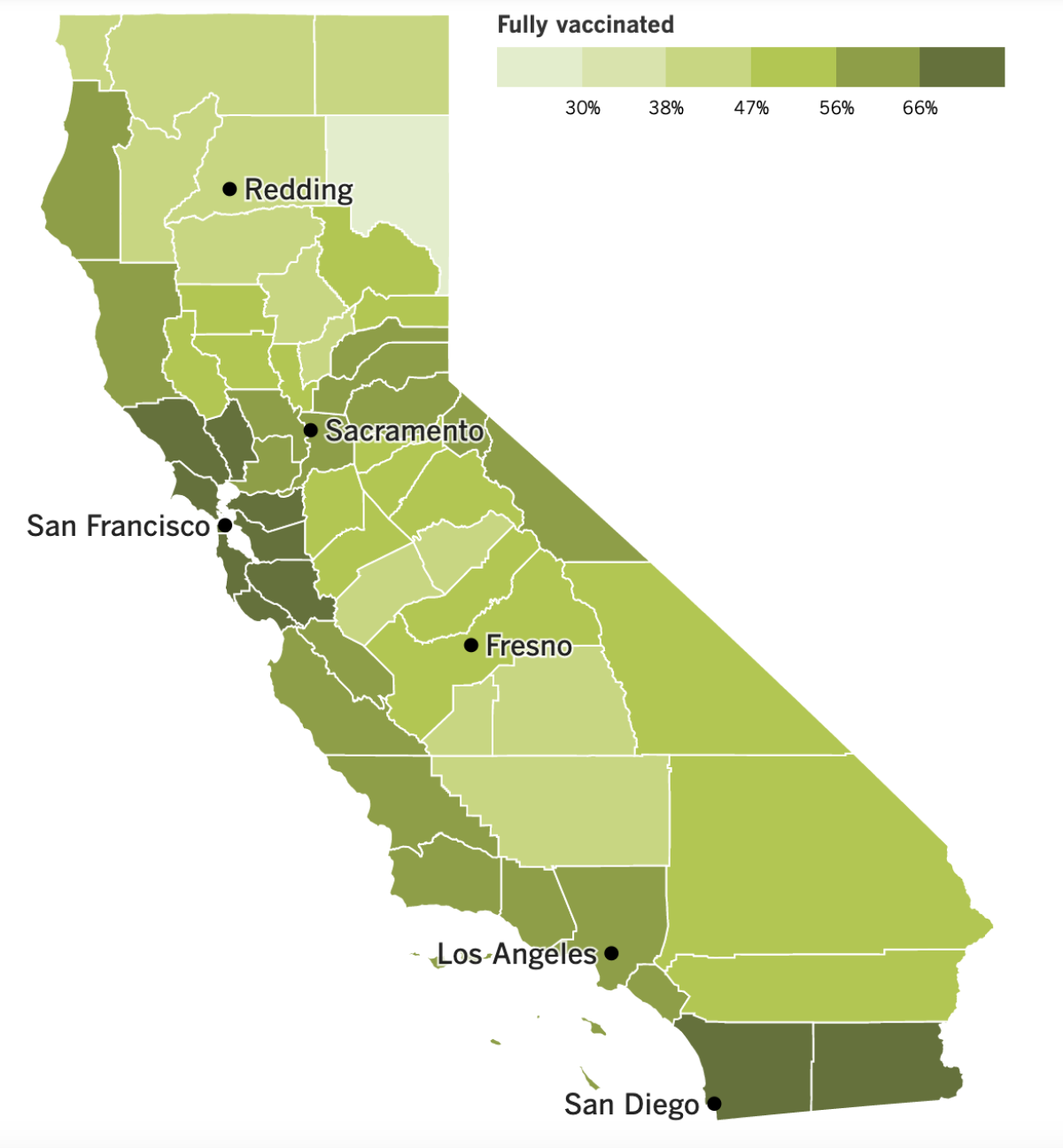
See the latest on California’s vaccination progress with our tracker.
Your support helps us deliver the news that matters most.
In other news ...
What’s on your wish list for the holidays? Maybe you haven’t made up your mind yet, but the state of California has — and it wants you to get a booster shot.
Health officials are hoping to head off a second fall-and-winter COVID-19 surge by encouraging as many booster-eligible adults to get an extra dose as soon as possible. So far, only 14% of fully vaccinated adults here have done so, including 34% of fully vaccinated senior citizens.
The CDC says adults are eligible for a booster shot if they got their Johnson & Johnson shot at least two months ago or if they got their second Pfizer-BioNTech or Moderna shot at least six months ago and face an increased risk of severe COVID-19 due to age, health status, living conditions or job requirements.
But state and local officials are urging pharmacies, medical centers and vaccine administrators to take a more expansive view. As long as people have met the time requirement, they should not be turned away, according to Dr. Tómas Aragón, the state health officer and public health director.
The CDC recently expanded its list of underlying medical conditions that would qualify someone for a booster. It’s now so broad that “pretty much everybody is eligible,” said Dr. Sara Cody, the health officer for Santa Clara County. “We really encourage everyone to get out and get their booster shot.”
Back to your holiday wish list: Odds are good that you’ll be visiting a mall at some point in the coming weeks. The city of Los Angeles wants to make that easier by dropping shopping centers from the list of places that require proof of vaccination to serve people indoors.
The City Council voted 10-0 Friday to request new language for the vaccine ordinance that went into effect Monday. Tweaks suggested by the city attorney will have to be approved in another vote.
Council members didn’t say what prompted their request. In earlier debates, there were questions about who would be responsible for enforcing the vaccine-verification rule, since there are so many ways for customers to enter a mall.
Elsewhere in the U.S., a federal judge in Austin has cleared the way for Texas schools to institute mask mandates if they so choose.
The judge ruled Wednesday that Gov. Greg Abbott’s controversial ban on mask mandates violated a federal law that protects disabled students who want access to public education. That means the Texas attorney general can’t sue school districts for requiring masks in the name of student safety. Fifteen such suits have been filed so far.
Globally, the World Health Organization reported that COVID-19 deaths in the Americas declined by 14% over the last week, and new cases fell by 5%. In Southeast Asia and Africa, deaths fell even more — by about one-third.
In Europe, on the other hand, COVID-19 deaths increased by 10% over the last week. New coronavirus cases there also rose by 7%, making Europe the only region in the world where both numbers grew, according to the WHO. It was the sixth-straight week that cases and deaths were up across the continent.
The situation has officials turning to measures that are sure to be unpopular. In some parts of Austria, for instance, people who are unvaccinated will soon be asked to stay home unless they have an essential reason to leave, like going to work or the grocery store. And in the Netherlands, it looks like bars and restaurants will be asked to close early for the next three weeks. Sporting events will ban spectators, too.
Things are especially dire in Eastern Europe, where vaccination rates are generally low. As in the U.S., the people who are becoming seriously ill and dying tend to be ones who have eschewed the vaccine.
There’s another similarity with the U.S.: “Breakthrough” infections and other signs of waning vaccine immunity are providing ammunition to vaccine resisters.
The situation in Europe is worth watching, since surges there are often followed by surges here. And this time around, the vaccination rate in the U.S. is lower than in Western Europe.
Your questions answered
Today’s question comes from readers who want to know: Does the Biden administration’s new vaccine mandate apply to me?
That depends on if you are employed, whom you work for and how many co-workers you have.
First, a little background. Last week, the federal Occupational Health and Safety Administration released its long-awaited rules for implementing Biden’s vaccine mandate for private employers. The tens of millions of Americans who are subject to the rules have until Jan. 4 to be fully vaccinated against COVID-19 or else submit to weekly coronavirus testing.
The OSHA rules are separate from an earlier vaccine mandate that covers workers employed by the federal government or one of its contractors. The new rules are also distinct from a vaccine mandate that applies to roughly 17 million people who work at hospitals, outpatient clinics, nursing homes and other facilities that treat Medicare and Medicaid patients.
The new vaccine mandate covers workers whose employers are under OSHA’s jurisdiction — a broad category that includes almost all private-sector organizations in the U.S., including Puerto Rico and several other U.S. territories. (Exempted from OSHA’s scrutiny are people who are self-employed, people who work on their own family farms, and people whose job-safety risks are regulated by another part of the federal government.)
To be subject to the vaccine mandate, your employer must have at least 100 employees. OSHA doesn’t care whether those workers are in the same place or spread out among multiple facilities. Also, for this math, part-time and seasonal employees count the same as regular full-time employees.
There are a few exceptions. The mandate does not apply to people who work outdoors all of the time. (If you ride to your job site with co-workers in a company vehicle, that counts as working “indoors” and the vaccine mandate covers you. However, if you only come indoors to use a restroom, it doesn’t.)
If you work from home exclusively, the mandate does not apply to you. Ditto if you are the only one in your workplace and don’t interact with customers or colleagues. But you’ll still count toward toward the 100-employee threshold.
Workers may request an exemption to the vaccine mandate on medical or religious grounds, and employers will have to take reasonable steps to accommodate valid requests and let people get weekly coronavirus testing instead. But if it’s not possible to work around someone’s unvaccinated status, failure to get the shots can cost them their jobs.
Not surprisingly, the vaccine mandate has its critics. More than half of the states have challenged the rules in court, and on Saturday, the federal appeals court based in New Orleans granted an emergency stay. Officials in the Biden administration say they’re confident they’ll prevail, in part because federal safety rules take precedence over state ones.
In fact, OSHA is already looking into the feasibility of extending the vaccine mandate to companies with fewer than 100 employees.
We want to hear from you. Email us your coronavirus questions, and we’ll do our best to answer them. Wondering if your question’s already been answered? Check out our archive here.
The pandemic in pictures
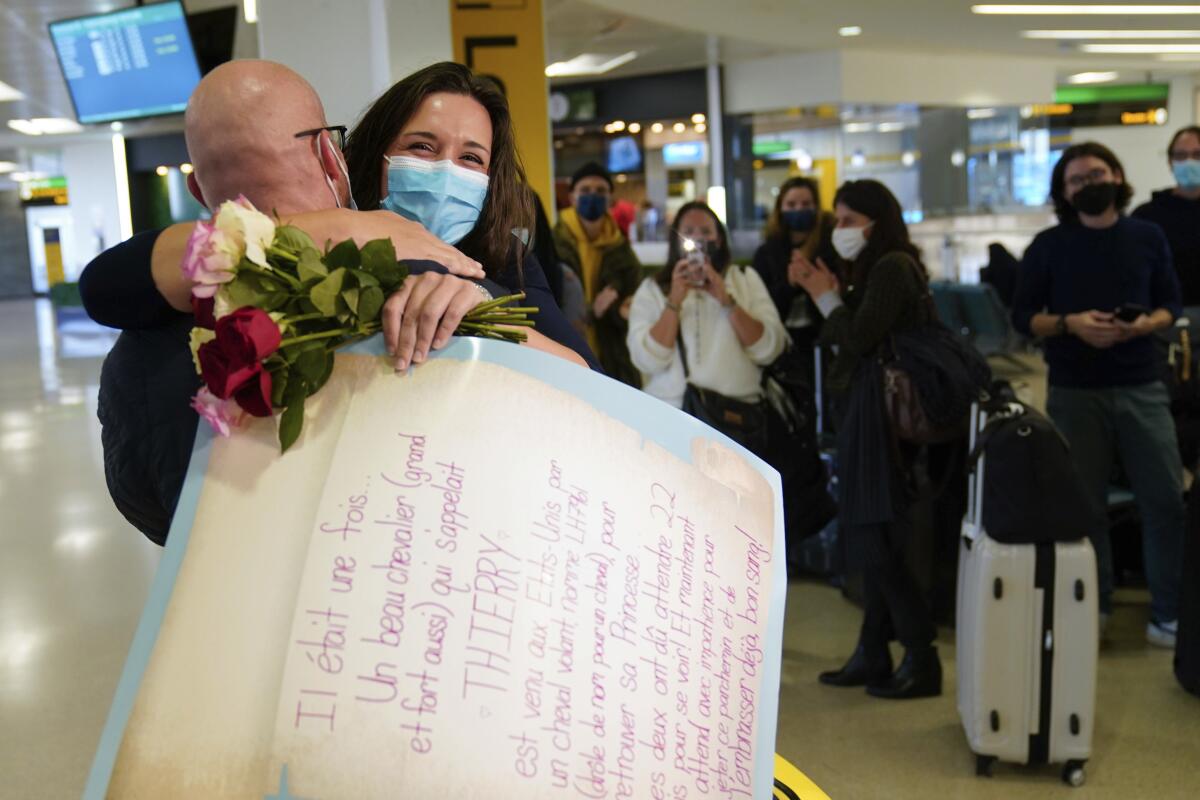
It’s been a week for emotional reunions now that the U.S. has lifted the COVID-19 travel restrictions that were in place for more than 20 months.
The rules came down early in the pandemic to keep the coronavirus out of the country. Unfortunately, that kept loved ones out of the country, too. U.S. citizens and permanent residents could return from trips abroad, but foreign citizens were forced to play a waiting game.
That meant this was the week for long-separated spouses to make their way back into each other’s arms, and for grandparents to embrace toddler grandchildren they’d never met.
“I’m going to jump into his arms, kiss him, touch him,” said Gaye Camara, who lives in France and was making her way through Paris’ Charles de Gaulle Airport to visit her New York-based husband, whom she’d last seen in January of 2020.
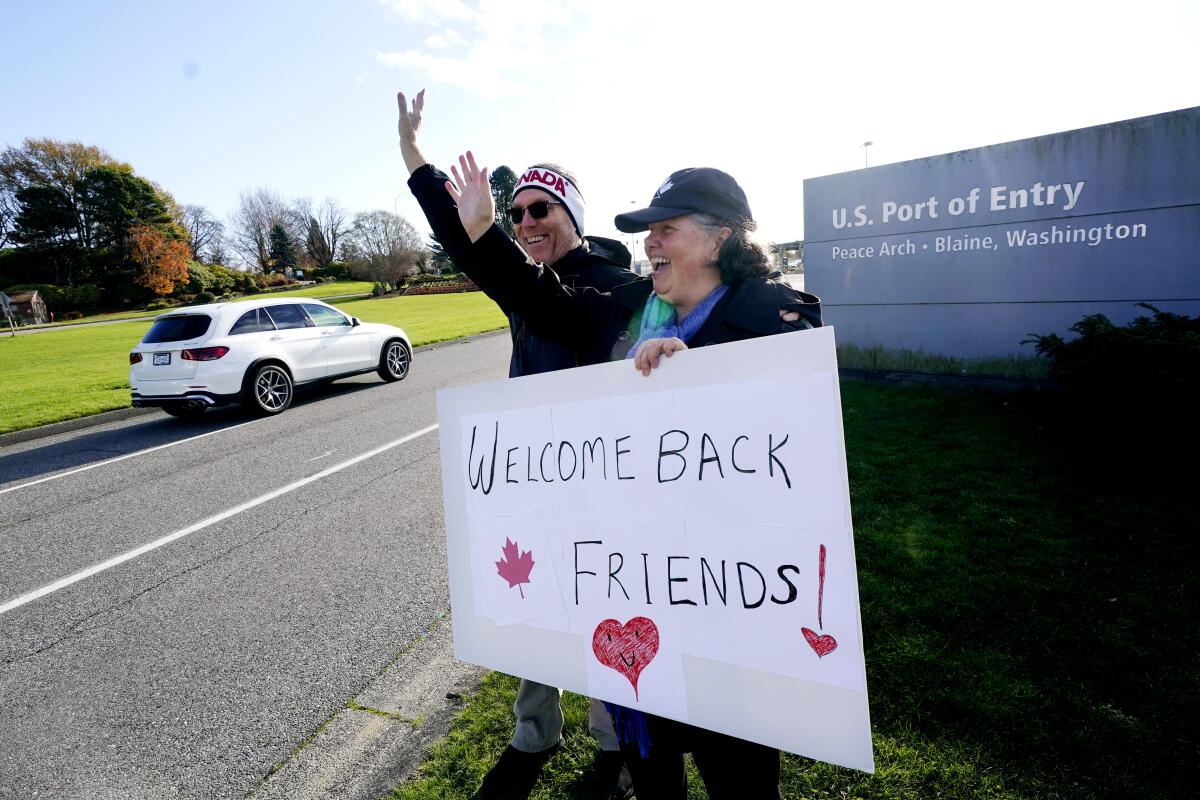
Resources
Need a vaccine? Keep in mind that supplies are limited, and getting one can be a challenge. Sign up for email updates, check your eligibility and, if you’re eligible, make an appointment where you live: City of Los Angeles | Los Angeles County | Kern County | Orange County | Riverside County | San Bernardino County | San Diego County | San Luis Obispo County | Santa Barbara County | Ventura County
Practice social distancing using these tips, and wear a mask or two.
Watch for symptoms such as fever, cough, shortness of breath, chills, shaking with chills, muscle pain, headache, sore throat and loss of taste or smell. Here’s what to look for and when.
Need to get tested? Here’s where you can in L.A. County and around California.
Americans are hurting in many ways. We have advice for helping kids cope, resources for people experiencing domestic abuse and a newsletter to help you make ends meet.
We’ve answered hundreds of readers’ questions. Explore them in our archive here.
For our most up-to-date coverage, visit our homepage and our Health section, get our breaking news alerts, and follow us on Twitter and Instagram.




